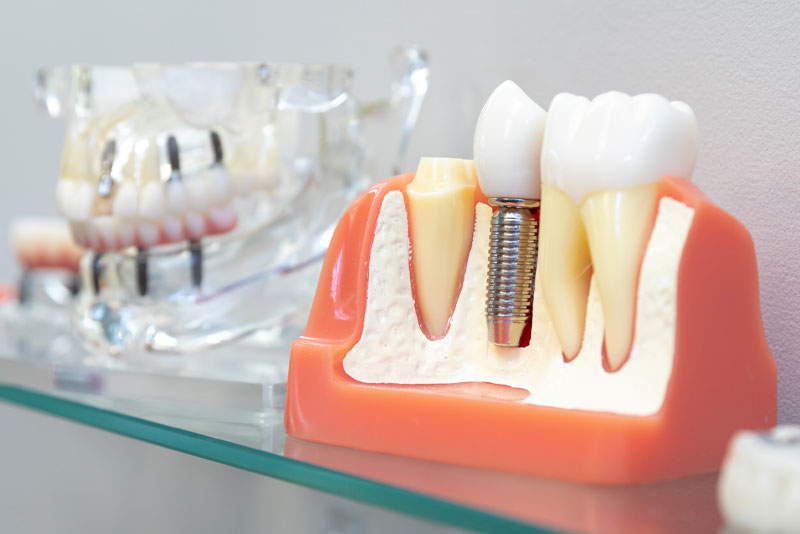Dental implants have revolutionized restorative dentistry, providing a permanent, natural-looking solution for individuals with missing or damaged teeth. Unlike traditional bridges or dentures, implants offer superior functionality, comfort, and longevity by integrating directly with the jawbone. A complete dental implant consists of three essential components: the implant screw, which serves as an artificial root; the abutment, which acts as the connector; and the crown, which mimics the appearance of a natural tooth. While all three components contribute to the success of the implant, understanding the abutment on implant is crucial for ensuring stability and longevity.
The abutment plays a critical role in securing the final restoration, acting as the bridge between the implant screw and the artificial tooth. After the implant has fused with the jawbone through a biological process called osseointegration, the abutment is placed onto the implant to create a solid foundation for the crown. This component is typically made from titanium or zirconia, ensuring durability and biocompatibility with the surrounding tissues. Proper placement and selection of the abutment are vital for achieving both a strong bite and a natural-looking aesthetic result.
Why Abutment Selection and Placement Matter
The abutment is more than just a connector—it directly impacts the implant’s stability, functionality, and long-term success. A well-placed abutment allows for even distribution of chewing forces, preventing excessive stress on the implant and surrounding teeth. If the abutment is not correctly aligned, the implant may feel unstable, leading to potential complications such as discomfort, shifting, or even failure. Choosing the appropriate abutment ensures that the final tooth restoration fits securely and feels completely natural.
In addition to providing stability, the abutment plays a crucial role in aesthetics and comfort. A precisely positioned abutment ensures that the crown aligns seamlessly with adjacent teeth, creating a uniform, natural smile. For front teeth restorations, abutments are carefully designed to mimic the natural emergence of a tooth from the gums. Poorly chosen or misaligned abutments may result in an unnatural appearance or gum irritation, which is why working with an experienced implant specialist is essential.
Different Types of Abutments and Their Benefits
When it comes to choosing the right abutment, patients have several options based on their anatomy, aesthetic preferences, and functional needs. Custom abutments are designed specifically for an individual’s mouth, ensuring an exact fit, optimal function, and natural appearance. These abutments are especially beneficial for highly visible teeth, where achieving a seamless look is crucial. Additionally, custom abutments allow for better gum contouring, improving both comfort and aesthetics.
Alternatively, stock abutments are pre-fabricated in standard sizes and shapes, offering a cost-effective solution for cases where precise aesthetics are not a primary concern. These abutments work well for back teeth restorations, where functionality is more important than visual appeal. The choice of abutment material also plays a significant role in implant success. Titanium abutments are known for their strength and durability, making them an excellent choice for molars that endure heavy biting forces. Zirconia abutments, on the other hand, provide a tooth-colored option ideal for front teeth, ensuring a more natural appearance without compromising strength.
Ensuring Long-Term Success with Proper Care and Maintenance
The success of a dental implant does not end with the placement of the crown—proper care and maintenance are essential for ensuring long-term functionality and aesthetics. Patients should follow a strict oral hygiene routine, including brushing twice a day with a soft-bristle toothbrush, flossing carefully around the implant, and using an antibacterial mouth rinse. These steps help prevent infections such as peri-implantitis, a condition that can lead to gum inflammation and implant failure.
Regular dental check-ups are also critical for monitoring the health of the implant and surrounding tissues. During these visits, dentists assess the stability of the abutment, ensure proper fit of the crown, and check for any signs of complications. Additionally, avoiding harmful habits such as smoking, chewing hard objects, and teeth grinding helps protect the implant from unnecessary stress and damage. By following these preventive measures and seeking timely professional care, patients can enjoy a fully functional, natural-looking implant for decades.
Are you ready to restore your smile with dental implants at our skilled and trusted dental practice? Don’t wait to get the smile of your dreams with us. Get in contact with our doctor, Dr. Piyuse Das and our exceptional team at our practice to schedule an appointment today!


